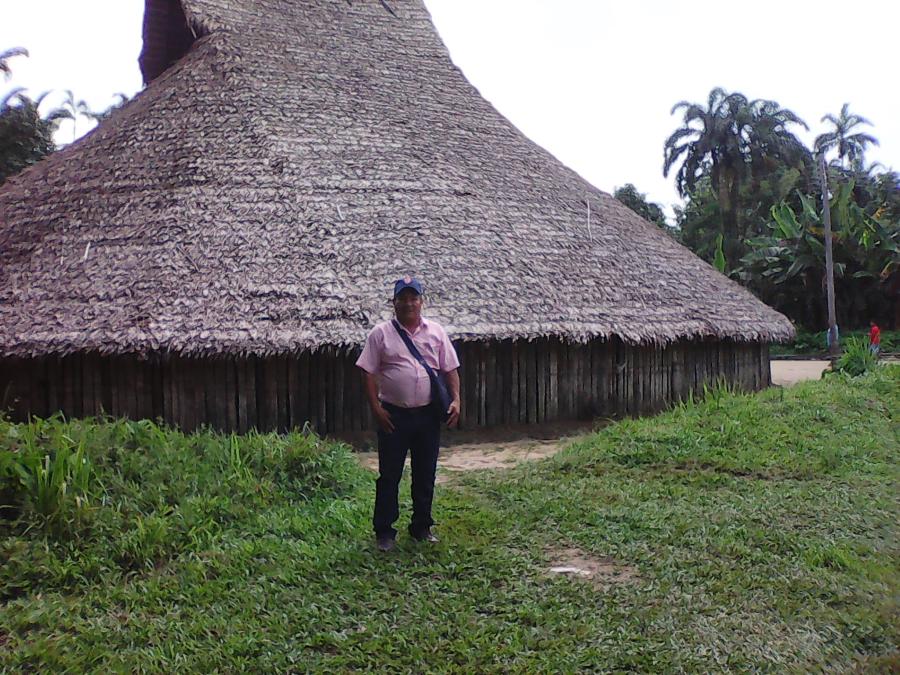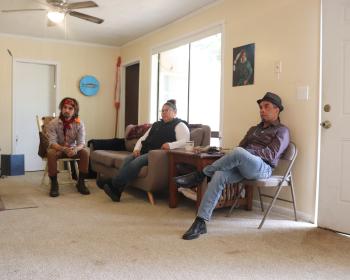CSN's Winter 1981 article, "The Katio vs. Escobar," illustrated how proposed Colombian legislation. Proyecto de Ley II of 1981, would eliminate Indian communities' right to freely solicit non-government assistance. In the area surrounding the Resguardo of Christinía, large landowners, whose landgrabbing the Katio Indians are protesting, control and influence most government offices. Without outside support, the Indians would be left to the mercy of their adversaries. Violence has already erupted: several Katio were jailed when they briefly occupied lands illegally worked by Libardo Escobar. Fortunately, legal assistance lawyers from FUNCOL and a local Katio lawyer. Anibal Tascon, secured their release. But this did not end the violence.
By March 1981, the Colombian Institute for Agrarian Reform (INCORA) had not resolved the land conflicts at Christinía, despite the Institute's promise to doe so. The Colombian journal Yavi reported that such indecision prompted earlier land invasions. So, not unexpectedly, when local government officials recently supported the Escobar family's claims to the Resguardo, the Katio refused to leave their land. The Escobars then tried to remove them. In the process, the Escobars' foreman, Editor Henao, allegedly murdered Mario Gonzalez Yagari, a Katio Indian.
Shortly thereafter, Anibal Tascon, a Katio lawyer who had once been gobernador (communally elected leader) of Christinía and who was working as the legal representative to the Resguardo, began to investigate Gonzalez Yagari's murder. On 10 April, 1981. Tascon, after filing papers dealing with the case, boarded a shuttle taxi and was traveling between the towns of Andes and Jardin when another man entered the taxi. After a few miles, unidentified passenger asked the driver to let him off. As the man stepped out of the cab, he drew a pistol, fired three bullets into Tascon's body, and fled. Tascon died before reaching a hospital.
To compound the tragedies, the investigation is being thwarted, In early June 1981, Miguel Vasquez Luna, a FUNCOL lawyer representing the Katio of Christinía, began to investigate the murders. After depositing evidence with the courts, Vasquez was interrogated. Although he was released within an hour, during the investigation the police asked him to turn over his papers and notes regarding the case and, when he refused, they threatened to send him to military headquarters in Medellin. Vasquez continues to work on the case.
The Christinía cases present questions which plague organizations such as Cultural Survival as they try to develop methodologies for guaranteeing human rights for ethnic minorities. While the victim and his oppressor are identifiable, to bring to trial and imprison the killer would not resolve the problem, for the assassin was probably hired by local landowners. Even if several landowners were tried and imprisoned, violent incidents would probably repeat themselves as long as the Katio were being pushed off their land. Land tenure problems and agrarian struggles in southern Colombia have produced and will continue to generate outspoken leaders who defend Indian land rights. If the landowners assume that continuous assassinations will somehow lop off the head of the movement and thereby cease that Indians' activities, they are blind to the forces which have shaped local history. Potential victims will continuously arise. For example, near the turn of the century, Quintin Lame, an early leader in the Colombian Indians' land struggle, asked:
Does it scare us that they burn our huts and destroy our corral just because we claim that which the Lord gave to us? The "whites" have taken our lands only because we did not know how to defend them. Today they want to screw us even more. We can't let that happen.
Since then, 41 leaders of CRIC (the Regional Indian Council of Cauca), have been assassinated, and dozens of other local Indians have been imprisoned or murdered in communities such as those from Christinía. Nevertheless, shortly before he died. Anibal Tascon, echoing Lame's cry, stated.
Indian compañeros of Christinía, if you want to live as human beings, continue struggling and demonstrate to the landowners that the Katío Indian is not going to bend, even through the landowners threaten us, even though they kill those of our compañeros who are struggling for justice. Let this struggle trumpet a victory which will allow us to recover our land and continue living as humans, as Katíos.
Such statements, and the violence which motivates them, will not stop until the conditions which produce them have ended. In southern Colombia the Indians, a large section of the population, are continuously threatened by gradual loss of land. At the same time, those who speak out and defend land rights are subjected to violence and repression. To consider each case individually blurs the fact that the victims are members of a particular group: the rights of the group must be safeguarded along with those of its members. If not, violence will become more common as the struggles increase. Thus, a two-pronged defense is necessary. One which continues to cry out and defend individual violations of human rights, and another which works to develop legal defenses for groups by combating the larger social forces which produce violent situations. If not, imprisonment and assassinations will continue to be endemic in southern Colombia and areas like it throughout the world.
Article copyright Cultural Survival, Inc.



